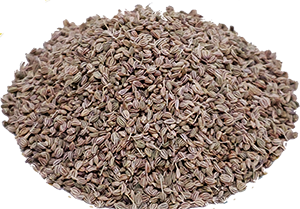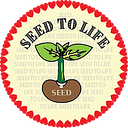Fact Check- Inhaling Camphor, Lavang, Ajwain, Eucalyptus Oil
Camphor Potli (Spice bag) Myths and Facts- Camphor Poisoning
Camphor Potli Myths & Facts | Benefits & Toxicity | Eucalyptus oil | Cloves | Carrom Seeds
Covid Vaccination is going on at full speed in many countries and despite that covid situation is not completely under control. And, as there is a shortage of medicines, vaccines, supplies like oxygen cylinders and ventilators, many people are desperately looking for alternative medicines.
For the past two days, one message is circulating on social media. The message recommends inhaling a heated mix of camphor, cloves, eucalyptus oil, and ajwain seed (carrom seeds) several times a day. All the ingredients are tied in a small cloth, called “potli” (spice bag).

Many of my friends and relatives are forwarding such messages and have started doing it. They do not have covid but they are doing it as a preventive measure. When I read this the warning bells rang in my mind. I recently made one video on camphor trees when got a new tree for myself. That is when I found out how toxic and dangerous camphor can be if used improperly. So I decided to do a little research to find out the truth behind it. And I’m going to share with you what I found. I’m going to share with you both the positive and negative aspects of each of these ingredients in short.
CAMPHOR (Camphora laurel)
We will start with camphor first. (See how to Grow Camphor at home.)
How camphor is made?

Camphor that we buy from stores can be obtained either natural way from camphor laurel trees or synthetically in factories or laboratories. Natural camphor is not very famous because it is very easy to make the camphor artificially and more importantly, making camphor from trees requires cutting down old trees. To get camphor from trees, the tree has to be at least 10 years old but usually much older trees are cut down in this process. These old trees are cut down and their trunk is peeled off to get clean inner wood. The wood is then cut into small pieces or wood chips. These wood chips undergo a distillation process. What it means is that the wood chips are boiled and the camphor mixed steam is moved to another water-filled pot using a hollow pipe. The steam is when cools down, camphor particles solidify and float on the water. The clumps are then collected and made into cubes or shelves. And that is the camphor that we use.
Is camphor tree or Camphor laurel the only tree from which camphor can be made?
Camphor is an organic compound that is also found in some other trees of the laurel family, like East African Camphorwood or Camphor Basil. Synthetically, it is made from the oil of turpentine.
Uses of Camphor
Camphor is part of many medicines including pain reliever ointments, balms, nasal decongestants, cough remedies, and anti-itch creams. It relieves cough symptoms because of its antispasmodic effects.
Camphor Toxicity
Natural camphor is also called D- camphor or dextrorotatory camphor L-camphor laevorotatory form is synthetic camphor. Synthetic camphor shows higher toxicity compared to the natural one. It is really hard to know if the camphor is natural or not.

I have these two types of camphor. The one on the right is edible. So, I believe this is the natural form. And I believe this is the one that you are supposed to use in the remedy. It is also called as “Pacha Camphor” “ Bhimseni Camphor”. I’m not sure if the edible camphor that I have is really natural camphor or not . The label did not mention anything. It didn’t even have as many details as any other normal spice has despite it having many dangerous side effects. Then there are cubes of synthetic camphor. Since many small manufacturing companies and not pharmaceutical companies are producing this camphor, I doubt that it is that easy to find pure natural camphor. And as we learned that it can only be made from mature trees, I doubt that there are enough trees still there to cut down and make camphor. Think about it. Is it really possible?
So, if you decide to use camphor for medicinal use then it is advisable to get an approved medicine with the proper dosage and warnings mentioned on the product.
Accidental/intentional, ingestion, inhalation of camphor, and even its application on the skin can result in camphor toxicity because it gets absorbed very easily into the body. In fact, camphor toxicity is quite common. Beware! Camphor passes through the placental barrier so pregnant and lactating women should avoid using and ingesting camphor-containing products. The same applies to infants. Camphor-containing products should not be used for children as they can cause convulsions that too just in a few minutes after ingestion/overdose. One of the most common causes of intoxication is accidental ingestion. You can find the products such as balms, mothballs, cold relieving over-the-counter medicines easily available in our houses. Applying camphor-containing ointments to children’s noses is also dangerous. You will probably see the warning labels mentioning that.
EUCALYPTUS OIL (Eucalyptus globulus)

Eucalyptus oil is another aromatic essential oil that is part of several traditional medicines and aromatherapy oils.
Benefits of Eucalyptus Oil

The leaves, fruits, and bark of the Eucalyptus plant contain several phytochemical compounds like flavonoids, alkaloids, tannins, and prostanoids. Eucalyptol is a major chemical that is found in high amounts.
Eucalyptus oil is traditionally used as a remedy for various illnesses such as cold, cough because of its antibacterial and antiseptic properties. It is also known to have some pain and fever-reducing properties, Eucalyptus oil is also known to have cytotoxic effects on the cells. So it is possibly useful to control abnormal cell growth that happens in tumors and cancers. But again you have to remember that most of these studies are only non-clinical. The experiments if they are done are only done on animals. So we don’t have the solid information to rely on.
Toxicity of Eucalyptus Oil
I always say that anything in excess is toxic. If eucalyptus oil is consumed above a particular limit, then it can be toxic too. And several courses talk about toxicity but I couldn’t find any very accurate information about the exact dose.
The toxic symptoms of eucalyptus oil start quickly after the overdose. They start with a burning sensation in the mouth and throat, stomachache, and vomiting. Initially, when the brain and the nervous system are affected it causes the inability to stand, lack of coordination. so the person may appear drunk and disorientated/ confused. It is followed by loss of consciousness occurring in about 10–15 mins, Convulsions are more common in children. Death usually happens after the dose of 30 ml but according to one resource it can also happen after taking much lower doses. The side effects start immediately after an overdose. They start with a burning sensation in the mouth and throat, abdominal pain, and vomiting. These symptoms are followed by effects on nervous system and manifest as giddiness, ataxia (impaired coordination). The person might appear drunk. Convulsions happen mostly in children.
CLOVES (Syzygium aromaticum)

Let’s talk about the third ingredient in the remedy that is clove.
Benefits of Cloves
clove spice (Syzygium aromaticum)or clove oil contains major constituent eugenol. You can find this valuable spice being used in various cuisines, dental products, and as an essential oil. It relieves headaches and mental fog. Clove oil is known to cure various infections and also is a very strong anti-oxidant. Clove has an antiplatelet effect. It prevents blood clotting. It also can be used as an expectorant or a cough remedy. It also has pain-relieving abilities.
Side Effects of Cloves
There is insufficient research on these chemicals especially enough clinical research. Nowadays many people suffer heart diseases and are kept on anti-platelet medicines like aspirin. So, an overdose of clove-containing products can further increase the chances of bleeding in some people. Cloves have a caustic effect and can burn the skin and mucosal layers. Ingestion of clove oil can cause poisoning to occur. Acute poisoning can cause loss of consciousness, coma, seizures, and liver failure.
AJWAIN/ CARROM SEEDS- (Trachyspermum ammi)

Ajwain/ Carrom seeds are one more ancient aromatic herb and a traditional medicine.
Benefits of Ajwain/ Carrom Seeds
The main essential oil in ajwain is thymol. Ajwain is known to cure cough and respiratory diseases. It is also used for the treatment of many stomach and digestion problems. It reduces stomach pain due to gas trouble, improves appetite. Ajwain seeds are added to rice porridge along with many valuable herbs like fenugreek. This is a very nutritious and herbalicious breakfast that new mothers eat in India. Ajwain is traditionally used for the treatment of intestinal worms.
Since carrom seeds contain phytochemical thymol, I tried to find the toxic dose or side effects of thymol. But very limited information is available about its effect on humans. But I know that thymol, probably the synthetic one is widely used as a pesticide. But there are no significant incident reports involving thymol have been reported.
We saw the claimed benefits of all these herbs and also saw the side effects and toxicity symptoms. Even though these herbs have some medicinal value and are traditionally being used for the treatment of cough and other respiratory problems, I couldn’t found any specific study focussed on their use in increasing the oxygen level of the body. They are primarily used as inhalers, to relieve cough, or as an expectorant as we saw earlier. More importantly, there are no studies focussing on the effectiveness of these herbs when they are used together.
However, there are several reports of poisoning caused by improper use of these herbal medicines. When a new medicine is approved and sold in the market, the company is required to go through several steps of research, animal studies and if found safe then finally the clinical studies. After the studies, when we purchase the medicines, manufacturers and prescribers inform us about the proper dosage, warn us about any other side effects, and also provide the helpline numbers in case of poisoning. When we start creating our own medicines at home, we do not know how much is safe to use. Especially with the ingredients like camphor, things can suddenly get ugly. It is dangerous to experiment with our health, especially at these times when even the hospitals are almost full at many places. Overall, the research on traditional medicines is very limited and not very expansive like it is for allopathy medicines. And even herbal remedies can have serious side effects. So, it is up to you to decide what is safe for you. Thank you. Stay safe!
